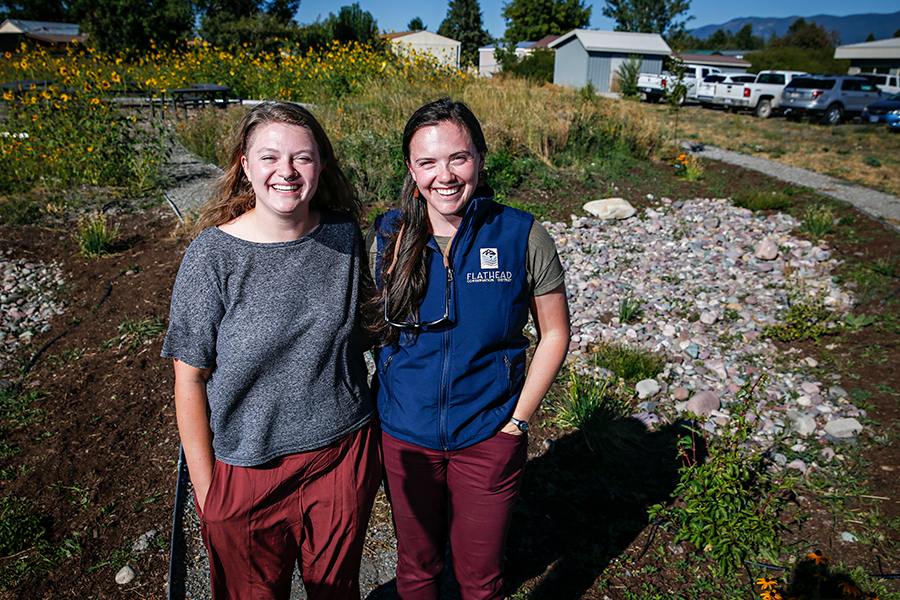Rain Gardens for Conservation
Flathead Conservation District and City of Kalispell are collaborating to mitigate pollutants entering watersheds
By Maggie Dresser
When local high school science teacher Randy Hohf first learned about the Flathead Rain Garden Initiative, a program that facilitates rain garden installation around the Flathead Valley, he quickly submitted an application and became the first participant.
Now, Hohf has a 330-square-foot, native plant rain garden in his yard, which captures and filters storm water to help prevent pollutants from entering Flathead Lake and other watersheds.
“It saves water, provides native pollinator plants for local bees, insects and birds, and it saves and cleans water,” Hohf said.
As a teacher and an education coordinator at the Center for Sustainability and Entrepreneurship in Whitefish, Hohf regularly works with local natural resource organizations. As the first participant in the program, he worked with the Flathead Conservation District (FCD) and the City of Kalispell Public Works Department, which facilitated the project.
Last year, Hailey Graf of FCD and Casey Lewis of Kalispell Public Works applied for a Soil and Water Conservation Districts of Montana grant, which is helping fund the initiative in its beginning stages. While the funding runs out this fall, an additional Environmental Protection Agency grant will add to the program.
“Flathead Conservation District will continue this funding after the grants expire to make it an ongoing program and to provide funding long-term,” Mikaela Richardson of FCD and a Big Sky Watershed Corps Member said.
When the initiative launched last year, Richardson and Emilie Henry of Kalispell Public Works started conducting site visits with homeowners and offered workshops and webinars to educate the public about rain gardens. Once the homeowner is ready to build, they assist with manual labor and offer suggestions about how to best implement the garden.
Rain gardens are set up in “zones,” with Zone A in a depression that contains plants, like blue-eyed grass, that are temporarily inundated with water after a rain or snow event. The next zones move outward and gradually become more drought-tolerant, including balsamroot, lupines and blue elderberry shrubs.
“They give you a list of plants of which go best in which zone and then you chose which plants you want,” Hohf said. “They also provide funds based on the size of the garden.”
With roughly 15 participants now involved, the homeowner incentive program provides funding for 90- to-150 square-foot, customizable gardens ranging from $200 to $400.
The program covered $400 for Hohf’s rain garden, which he says was mostly spent on native plants while he spent an additional $120 on pipes and bark.
“I just think it’s a really awesome opportunity and I just tell everybody about it,” Hohf said. “Even just the consultation and inspiration they provide … we’re conserving water and theoretically I should never have to water it.”
“Its just one little thing you can do to stop pollutants from getting into our water,” Henry added.
For more information, visit www.flatheadcd.org.